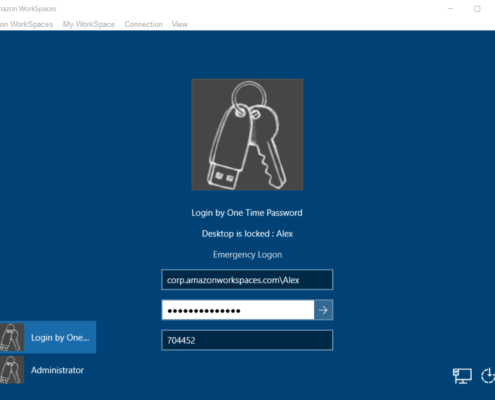


I used remote desktop to log into a local PC with the client and it experienced the same issue. Checking for updates for the WorkSpaces client shows there is no newer version available. I could have more easily known whether this was a global issue across the business or a local issue with one user and this may have been the most obvious thing to check. In my lab environment, given that WorkSpaces has problems more frequently than my MacBook Pro, this was the second most obvious issue. A reboot of the local machine made no difference in the client’s behavior. Had this been in production I would likely have a few users to test with. I have to make sure there is nothing wrong with my local machine. Selecting it and choosing “Reboot” gives us a 5 to 10 minute reboot cycle that historically fixes a wide range of various issues even if the instance is reporting healthy. After the reboot, the problem remains. The first steps in most troubleshooting are usually the easiest to test for and typically fix a wide variety of problems. “Try rebooting.” Logging into the AWS Console shows that the WorkSpace is indeed powered on and reporting its status as Healthy. The client was failing on WorkSpaces service. In order: Network Connection Internet Connection WorkSpaces service TCP Port 4172 UDP Port 4172 Round Trip Time. The client has a button in the lower right-hand corner next to the work “Network.” Clicking that button will bring up a screen with several levels of connectivity levels, making troubleshooting easier for those technically inclined. The second message stated that the service was unavailable. The first error message stated that the client couldn’t start the instance. The Amazon WorkSpace client gave two different error messages when attempting to connect. Issue: I can no longer connect to Amazon WorkSpace. In my lab environment, the AWS WorkSpace client suddenly stopped connecting to the cloud service, and the following is the sequence of events I used to troubleshoot what happened, determine where the problem was, and how I resolved it, all while maintaining SSL Decryption for as much traffic as I could. In other words, keeping security as a primary concern. It is a great way for businesses to move legacy applications to the cloud. For example, an EC2 server can be on the same local network as a WorkSpace environment so that file shares and even older client/server-based applications can operate at high speed on a local network that costs you nothing in bandwidth. The close integration with other AWS services provides additional benefits. It uses Teradici’s PCoIP technology as the transport for the screens which gives it a competitive advantage over similar services.

Aws mac app for workspaces software#
I am using Amazon WorkSpaces for this example because I recently ran up against this problem, but a similar issue could happen during any cloud software product’s normal lifecycle.Īmazon WorkSpaces is a service that provides managed remote desktops based on Server 2012 or Server 2016. Security is hard, and here is a great example as to why.


 0 kommentar(er)
0 kommentar(er)
